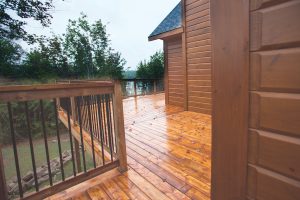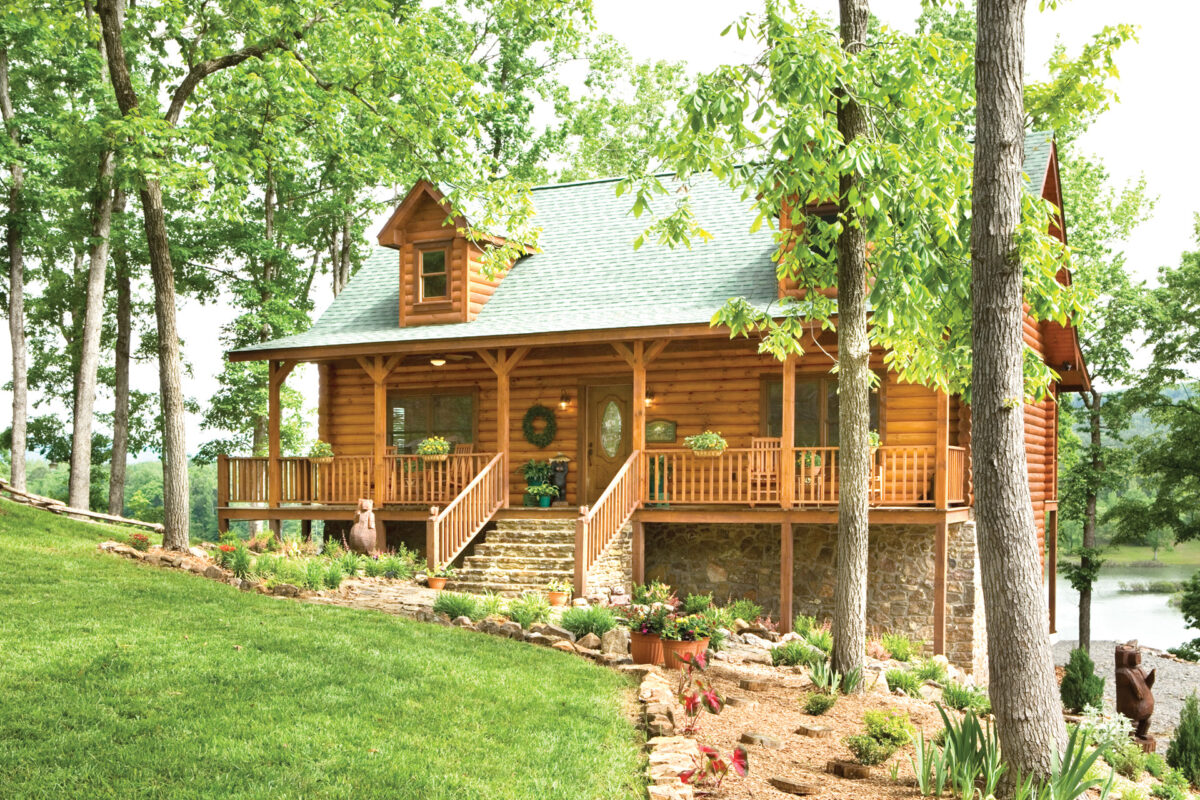Taking on projects that save money may be an option for homeowners with some log and timber building projects.
When the log or timber home they have always wanted begins to take shape, some homeowners bring their own personal skills to the project, pitching in with certain aspects of the construction process. For these individuals, the satisfaction of saving money is complemented by the hands-on participation in the completion of their long-sought-after home.
Many times, owners enjoy that degree of participation, contributing to the finished project, but there are risks involved. Getting in over their heads is always a possibility. So, in the interest of saving time, effort, and unforeseen costs, evaluate the complexity of the work being considered and consult the professional members of the construction team early.
“First and foremost, bring the general contractor in for a conversation,” advises Mathew Sterchi of Stonemill Log Homes. “Some general contactors don’t want to take on the liability of owners doing some of the work themselves. Of course, if the homeowner is doing all the subcontracting, then there is no issue. Still, there should be a healthy respect and concern for any homeowner-contributed project. Make sure that you have the experience to do it right.”
While Sterchi points out that difficult situations have occurred when owners take aspects of construction into their own hands, he adds that there are classes available to assist in sharpening the necessary skills. These are often held at local colleges or sponsored by building materials companies or contractor associations. “It’s human nature to participate, but don’t bite off more than you can chew,” he adds, “and remember that it can complicate the situation for the general contractor when it comes time for inspections and draws.”
Robert Lambert of Natural Element Homes agrees that a bit of education is a good thing. “Taking classes may be worth your time,” he remarks, “especially if you have a lot of free time. The real benefit is that homeowners are educated on how things should be done, and they can use this knowledge to make sure the general contractor is doing things right too. Perhaps as much as one-third of the cost of the home is paid out for labor of some form. Any of this labor done by the homeowner means potential savings. But there are many other factors at play, and efforts made to save money can end up costing money instead.”

One project skilled homeowners may tackle is building or finishing a porch or deck.
Brad Neu of Montana Log Homes adds that sweat equity can result in meaningful savings when the homeowner’s contribution is focused in appropriate areas. “We like to call this ‘sweat equity,’” he says. “The savings can vary a lot, but we have seen some homeowners shave 20 to 30 percent off their budget.”
With plenty of respect for the pitfalls, there are still a number of projects that allow owners to participate in the construction of their new log or timber home. Among the easiest are those that require a willing hand and a bit of practice.
“Sanding of the logs and interior tongue and groove prior to the application of polyurethane or stain is one that often works along with applying stain or poly to finished surfaces on the interior of the home,” commented Brad Mercer of Timberhaven Log & Timber Homes. “It’s not rocket science. You would need some scaffolding and perhaps a sprayer, and I have had a number of clients who did choose to do this. Staining of the exterior is a possibility, too, and you can benefit from a few pointers on these ideas, which will ensure proper results. It is an investment in time and a little elbow grease.”
Despite the acknowledged need for a professional’s touch and expertise, a laundry list of do-it-yourself opportunities remains for the adventurous and cost-conscious homeowner to explore. “Some of my more advanced clients will build or at least apply finish to the decks and porches,” noted Mercer. “Also, some who have finish carpentry skills can hang interior T&G, interior doors, install windows, doors, and basement trim, and others have installed their own hardwood flooring or tile.”
The professionals agree that the investment of time and labor enhances the pride of ownership and sense of accomplishment that many log or timber homeowners feel when their construction journey has reached its successful conclusion. “It’s not always the money, but rather a sense of pride,” explains Lambert. “After all, the homeowners will live in the home for a long time, and they need to be proud of how it was built and their role in the process.”
Nevertheless, a word to the wise: be wary of complicated and potentially dangerous aspects of construction. Unless the homeowners have a tremendous amount of experience and knowledge, Sterchi cautions them to “stay away from electrical, plumbing, and roofing work. These things, along with cabinetry and others, require some experience and you can’t get into them without training.”
Mercer echoes that advice. “Unless a homeowner has a particular skill set in one of these disciplines, I would suggest leaving the electrical, plumbing, HVAC, shingles, hanging and prepping drywall, if any, to the experts. It does not pay to try to attempt any of these unless you are well versed in these disciplines.”
Cost is one obvious factor in log and timber home construction but lasting well beyond that initial consideration is the quality, fit, finish, and overall livability and appeal of the home itself. Investing sweat equity as a homeowner is potentially a satisfying experience that yields enhanced results and satisfaction. Just remember to be prepared for the endeavor. Knowledge is power.
“The homeowners’ contribution will depend a lot on their experience,” reasons Neu. “Our advice is for clients to be honest with themselves regarding the time that they can commit to the project and about their own abilities.”
Realistically, the best advice when considering a hands-on aspect of log and timber home construction is the old adage, “Look before you leap!” When the combination of necessary factors comes together, the results can be spectacular.

